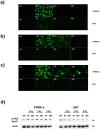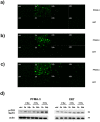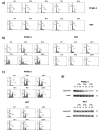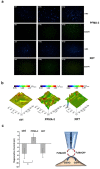Enhancing radiosensitivity of melanoma cells through very high dose rate pulses released by a plasma focus device
- PMID: 29958291
- PMCID: PMC6025851
- DOI: 10.1371/journal.pone.0199312
Enhancing radiosensitivity of melanoma cells through very high dose rate pulses released by a plasma focus device
Erratum in
-
Correction: Enhancing radiosensitivity of melanoma cells through very high dose rate pulses released by a plasma focus device.PLoS One. 2018 Sep 21;13(9):e0204692. doi: 10.1371/journal.pone.0204692. eCollection 2018. PLoS One. 2018. PMID: 30240450 Free PMC article.
Retraction in
-
Retraction: Enhancing radiosensitivity of melanoma cells through very high dose rate pulses released by a plasma focus device.PLoS One. 2023 Nov 14;18(11):e0294549. doi: 10.1371/journal.pone.0294549. eCollection 2023. PLoS One. 2023. PMID: 37963168 Free PMC article. No abstract available.
Abstract
Radiation therapy is a useful and standard tumor treatment strategy. Despite recent advances in delivery of ionizing radiation, survival rates for some cancer patients are still low because of recurrence and radioresistance. This is why many novel approaches have been explored to improve radiotherapy outcome. Some strategies are focused on enhancement of accuracy in ionizing radiation delivery and on the generation of greater radiation beams, for example with a higher dose rate. In the present study we proposed an in vitro research of the biological effects of very high dose rate beam on SK-Mel28 and A375, two radioresistant human melanoma cell lines. The beam was delivered by a pulsed plasma device, a "Mather type" Plasma Focus for medical applications. We hypothesized that this pulsed X-rays generator is significantly more effective to impair melanoma cells survival compared to conventional X-ray tube. Very high dose rate treatments were able to reduce clonogenic efficiency of SK-Mel28 and A375 more than the X-ray tube and to induce a greater, less easy-to-repair DNA double-strand breaks. Very little is known about biological consequences of such dose rate. Our characterization is preliminary but is the first step toward future clinical considerations.
Conflict of interest statement
The authors have declared that no competing interests exist.
Figures









References
-
- Delaney G, Jacob S, Featherstone C, Barton M. The role of radiotherapy in cancer treatment: estimating optimal utilization from a review of evidence-based clinical guidelines. Cancer. 2005;104(6):1129–37. doi: 10.1002/cncr.21324 . - DOI - PubMed
-
- Bhide SA, Nutting CM. Recent advances in radiotherapy. BMC Med. 2010;8:25 doi: 10.1186/1741-7015-8-25 . - DOI - PMC - PubMed
-
- Baumann M, Krause M, Overgaard J, Debus J, Bentzen SM, Daartz J, et al. Radiation oncology in the era of precision medicine. Nat Rev Cancer. 2016;16(4):234–49. doi: 10.1038/nrc.2016.18 . - DOI - PubMed
-
- Maier P, Hartmann L, Wenz F, Herskind C. Cellular Pathways in Response to Ionizing Radiation and Their Targetability for Tumor Radiosensitization. Int J Mol Sci. 2016;17(1). doi: 10.3390/ijms17010102 . - DOI - PMC - PubMed
-
- Bentzen SM, Ritter MA. The alpha/beta ratio for prostate cancer: what is it, really? Radiother Oncol. 2005;76(1):1–3. doi: 10.1016/j.radonc.2005.06.009 . - DOI - PubMed
Publication types
MeSH terms
LinkOut - more resources
Full Text Sources
Other Literature Sources
Medical

